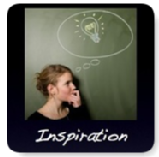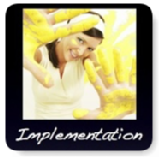All 1 entries tagged Podcast
View all 159 entries tagged Podcast on Warwick Blogs | View entries tagged Podcast at Technorati | There are no images tagged Podcast on this blog
October 16, 2009
Innovation Through Design Thinking, Tim Brown of IDEO (iTunesU podcast)
Here are some notes on a talk by Tim Brown (CEO of design company IDEO), given to the MIT Sloan Business School. You can watch a video of the talk on iTunes. It's an excellent and well presented talk, packed with useful ideas relevant to all kinds of work (explicitly or implicitly creative and innovative). I have selected points that are particularly relevant to my development projects, teaching and research on creativity, space and teaching and design.
05:20 – The lecture starts, after 5 minutes of introductions.
07:15 – We believe that companies which view design as just making things cool or pretty are missing the point. [Design is an essential element in innovation, process design and service design]
08:16 - Six Sigma and Design Thinking – Recommends a Business Week interview with Jeff Immelt, CEO of GE: Bringing Innovation to the Home of Six Sigma - but implies that the two approaches sit uncomfortably together.
08:32 - For many companies design thinking is the way that they create their future.
12:05 – It is an approach to innovation.
14:16 – [Involves] People (desirability); Business (viability); Technology (feasibility).
14:59 - Three important phases (inspiration, ideation, implementation).
16:48 - Insights are the fuel for innovation
17:12 - Design thinkers use the world as a source of inspiration not just validation
18:27 - It starts with empathy
21:28 - Analogous situations
22:50 - Insights come from extreme users
23:56 – We’re not trying to get statistical data about what the world thinks, we’re simply trying to get new ideas, we’ll evaluate those ideas later, we just want a source of inspiration.
24:40 – Building to think (prototyping)
The real kind of notion here is that we’re kind of used to building things to show people what we have done, so we’re used to the notion that we might build a model a prototype, whether it’s a physical thing or not, to show people that we’ve achieved something, and to get their permission their authorisation to move forwards, the idea that you’ll build a prototype to take to a milestone meeting to show the boss so that he will give you more money to keep going. But that’s not what we are talking about here. We’re talking about building things to learn about your ideas.
25:39 Learn by prototyping, and that means prototyping quickly and inexpensively. You want to do a lot of prototyping.
27:34 – Prototypes don’t have to be physical but they must be tangible. … They must allow you to build a picture and come to a sense of what you have learned.
27:52 – There are all kinds of prototyping techniques that are very useful, based around film making, based around improv, we act our ideas out.
33:00 - There are different kinds of prototypes and different kinds of prototypes exist at different parts of the design process (inspire, ideate, implement).
35:15 – In our experience, many good ideas fail to make it out to market, not because they aren’t good ideas, but because they couldn’t make it through the corporation, they couldn’t navigate through the system … one mechanism for beginning to deal with that … is storytelling, and the more powerfully you can construct a story around the ideas you have, the better you can communicate those ideas to your colleagues, to partners, to stakeholders, the more likely that idea is to survive through the process, and so the use of storytelling, the use of movie making, the use of building experiences that are about those ideas themselves, the more you can do that the more you will succeed in getting your ideas out there. [Nike] The design team started making ads of their ideas before they showed them to anybody.
Stories help provide the framework for creating ideas.
38:05 – The story can be tangible and experiential.
39:38 – Design cultures, innovation cultures, if there’s one thing that they do, if they do nothing else, they are really good at being inspired and being inspiring, they get people to think about things in different kinds of ways.
39:52 – One of the things to look out for is how inspired are people by what’s going on out in the world? How connected are you to the outside world to the big ideas that are emerging?
43:40 – Being inspired about where you get your ideas. Space has a huge impact on one’s ability to innovate, not just how cool is it, how fun is it, but how is it laid out? What are you actually using space for? We have relatively small amounts of space at IDEO dedicated to individuals, but we have lots and lots of space dedicated to project rooms, and the reason we have lots of space dedicated to projects rooms is that when you are trying to synthesise large amounts of information in projects you need to do that visually, you need to have it up around you, you need to be able to plaster the walls with things.
52:14 – We have a team on our campus whose only job is to create project rooms for people, take them away again, and make new ones [they also record what has happened in them]. Typically a project room might be in existence for a couple of months.
 Robert O'Toole
Robert O'Toole

 Please wait - comments are loading
Please wait - comments are loading





